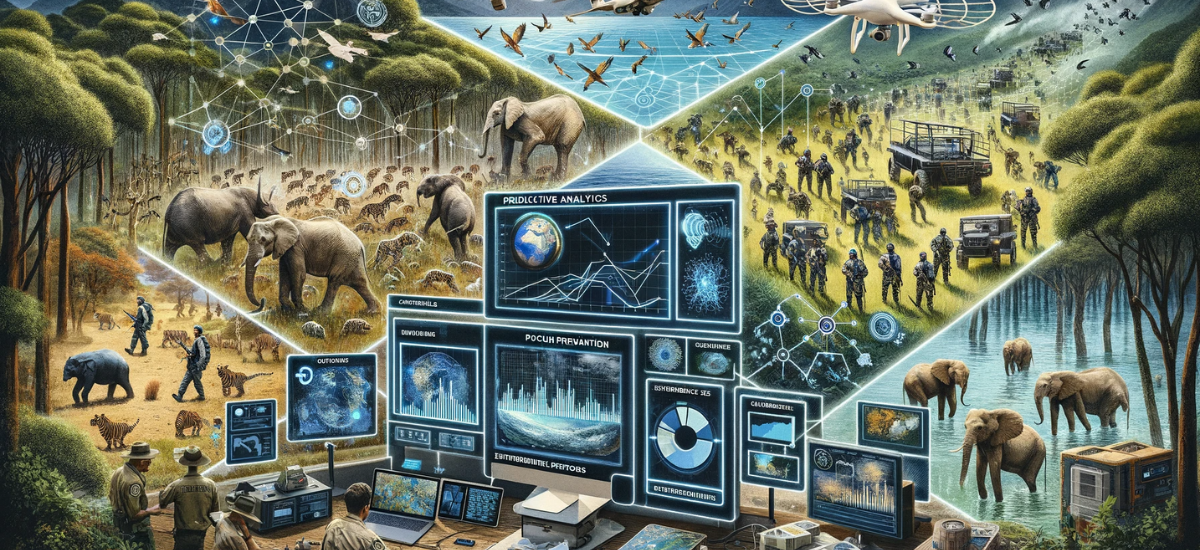AI And Wildlife: A Critical Analysis Of Its Contribution To Conservation

Table of Contents
AI-Powered Surveillance and Anti-Poaching Efforts
The fight against poaching is a constant battle, but AI is providing crucial support. Advanced technologies are enhancing anti-poaching strategies, leading to more effective protection of vulnerable wildlife populations.
Real-time Monitoring and Detection
AI is revolutionizing real-time monitoring and detection of poaching activities. This involves deploying several innovative technological approaches:
- Drone Surveillance: Drones equipped with AI-powered image recognition can patrol vast areas, identifying poachers in real-time. This significantly reduces response times, allowing rangers to intervene quickly and effectively. The use of thermal imaging in conjunction with AI algorithms further enhances detection capabilities, even in low-light conditions.
- Acoustic Monitoring: Acoustic sensors, combined with AI algorithms, can identify the sounds of endangered species and distinguish them from human activity, such as the sounds of vehicles or gunfire, indicating potential poaching events. This passive monitoring technique is particularly useful in dense vegetation where visual surveillance is challenging.
- Predictive Policing: AI-driven predictive models analyze historical poaching data, environmental factors (e.g., weather patterns, vegetation density), and even social media data to anticipate poaching hotspots. This allows for proactive deployment of resources and targeted patrols, maximizing the impact of limited conservation budgets.
- Example: The successful implementation of AI-powered surveillance systems in Kruger National Park in South Africa has demonstrably reduced poaching rates of rhinos and elephants.
Automated Data Analysis and Pattern Recognition
The sheer volume of data generated by surveillance systems – images, videos, and audio recordings – makes manual analysis impractical. AI algorithms excel at this task:
- Efficient Data Processing: AI can process vast amounts of surveillance data far more efficiently than humans, identifying subtle patterns and anomalies indicative of illegal activity. This includes recognizing specific poaching techniques or unusual vehicle movements.
- Pattern Recognition: AI algorithms can detect subtle patterns and connections that might escape human observation, uncovering complex poaching networks and their operational strategies. This enhances investigative capabilities and helps disrupt organized crime.
- Improved Accuracy: While initial deployments may have high rates of false positives, ongoing development of AI algorithms focuses on minimizing these errors, maximizing the accuracy and reliability of the system.
- Example: Studies have shown that automated data analysis using AI has helped identify and dismantle large-scale poaching rings, leading to significant arrests and convictions.
AI-Driven Habitat Monitoring and Management
Effective wildlife conservation relies on comprehensive understanding and management of habitats. AI provides powerful tools for this critical task:
Habitat Mapping and Analysis
AI plays a crucial role in creating detailed and accurate maps of wildlife habitats:
- Satellite Imagery Analysis: Satellite imagery combined with AI algorithms allows for the creation of high-resolution maps of wildlife habitats, identifying areas of high conservation value, such as crucial breeding grounds or migration corridors.
- Habitat Fragmentation Assessment: AI can analyze habitat fragmentation and degradation, providing critical insights into the health and connectivity of ecosystems. This information informs conservation strategies, such as habitat restoration or the creation of wildlife corridors.
- Predictive Modeling: AI can predict future habitat loss based on climate change models, land-use changes, and other environmental factors, enabling proactive conservation planning.
- Example: AI is being used to map deforestation patterns in the Amazon rainforest, providing crucial information for monitoring illegal logging and supporting forest conservation efforts.
Species Population Monitoring
Accurately monitoring wildlife populations is fundamental to conservation efforts. AI significantly enhances this process:
- Automated Species Identification: AI-powered image recognition software can automatically identify and count animals in camera trap images and videos, saving significant time and resources for conservationists.
- Movement Pattern Analysis: AI algorithms can analyze animal movement patterns, revealing insights into their habitat use, migration routes, and potential threats. This helps in identifying areas requiring additional protection or management intervention.
- Early Warning Systems: AI-driven trend analysis can identify early warning signs of population decline, allowing for timely interventions to prevent extinction.
- Example: AI has been successfully deployed to monitor populations of endangered species such as tigers and snow leopards, providing accurate and timely data for effective conservation management.
Challenges and Ethical Considerations in Utilizing AI for Wildlife Conservation
While the potential benefits of AI in wildlife conservation are immense, it's crucial to address associated challenges and ethical considerations:
Data Bias and Algorithmic Fairness
AI algorithms are only as good as the data they are trained on. Bias in training datasets can lead to inaccurate or unfair outcomes:
- Addressing Bias: Careful curation of training datasets is vital to ensure they are representative and avoid biases that could disproportionately affect certain species or regions.
- Transparency and Accountability: Transparency in algorithm development and deployment is crucial to build trust and ensure accountability. Mechanisms for auditing and evaluating AI systems for fairness are essential.
Data Privacy and Security
AI-powered surveillance systems collect vast amounts of sensitive data, raising privacy concerns:
- Data Security: Robust security measures are needed to protect sensitive data from unauthorized access or breaches.
- Ethical Guidelines: Clear guidelines and regulations are essential for the ethical use of AI in wildlife conservation, balancing the need for effective monitoring with respect for privacy rights.
Technological Accessibility and Affordability
The cost and complexity of AI technologies can be a barrier for conservation organizations, particularly in developing countries:
- Affordable Solutions: Developing cost-effective and user-friendly AI tools is crucial to ensure accessibility for all conservation organizations, regardless of their resources.
- Capacity Building: Providing training and support to conservation professionals on the use of AI technologies is essential for successful implementation.
Conclusion
AI is rapidly transforming the field of wildlife conservation, offering powerful new tools to combat poaching, monitor habitats, and protect endangered species. While challenges remain, particularly regarding ethical considerations and accessibility, the potential benefits of AI are immense. By embracing AI responsibly and addressing these challenges proactively, we can harness its transformative power to secure a brighter future for wildlife and ecosystems worldwide. Learn more about the exciting possibilities and ongoing advancements in AI and wildlife conservation and join the global effort to protect our planet’s biodiversity. The future of wildlife conservation depends on our collective commitment to innovation and responsible stewardship, and AI is a key component of this crucial endeavor.

Featured Posts
-
 Decoding The Bank Of Canada Pause Insights From Financial Experts Via Fp Video
Apr 23, 2025
Decoding The Bank Of Canada Pause Insights From Financial Experts Via Fp Video
Apr 23, 2025 -
 How To Remove Your Online Presence Completely
Apr 23, 2025
How To Remove Your Online Presence Completely
Apr 23, 2025 -
 Entretien Avec Pascal Boulanger President De La Federation Des Promoteurs Immobiliers
Apr 23, 2025
Entretien Avec Pascal Boulanger President De La Federation Des Promoteurs Immobiliers
Apr 23, 2025 -
 Resultats Fdj Du 17 Fevrier Hausse En Bourse Et Perspectives
Apr 23, 2025
Resultats Fdj Du 17 Fevrier Hausse En Bourse Et Perspectives
Apr 23, 2025 -
 Double Trouble In Hollywood The Writers And Actors Strike
Apr 23, 2025
Double Trouble In Hollywood The Writers And Actors Strike
Apr 23, 2025
